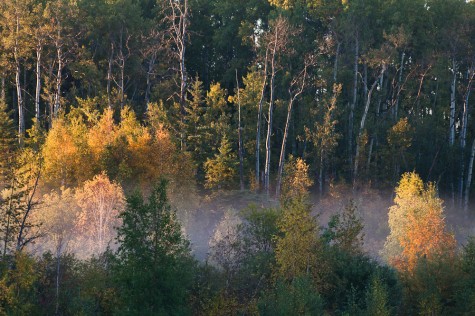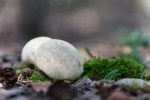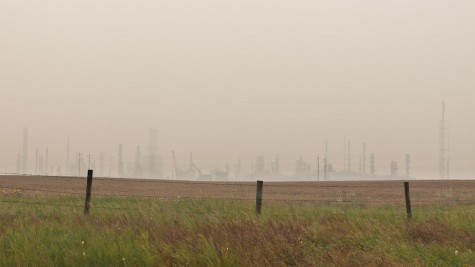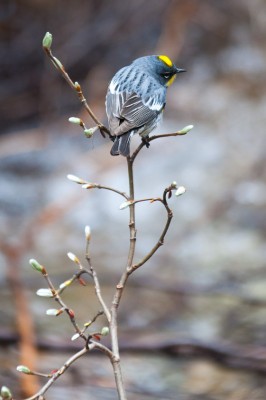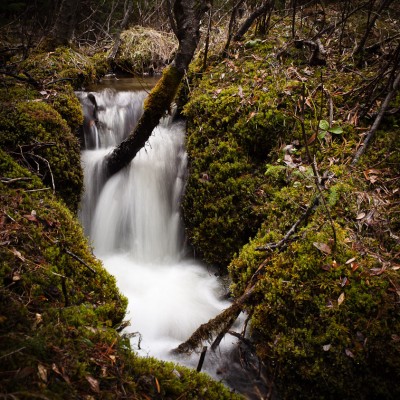I had the pleasure of spending a morning out at Ministik Lake, and what a morning it was. The forecast was for clear skies and the first good overnight frost of the year, with temperatures down to a few degrees above freezing. As the sun rose, light fog rose from the lakes and hung in the still air, frost hung lightly on the understory leaves, and the clear autumn light shone off the first of the birch trees just beginning to change colour—it was exquisite.
|
||
|
I took a great walk through Ministik Lake Game Bird Sanctuary yesterday afternoon—always one of my favourite places to photograph (click here to see why). The weather we’ve had this year has been just right for growing mushrooms (warm days, lots of afternoon showers), and there was a fantastic selection of beautiful species on show. I’ll not write too much, just post a bunch of photos to inspire those of you who—like myself—have both photographic and mycological tendencies, to go out and find some fungi.
P.S. My mushroom ID skills are not terrible, but do not take my word that these are what I say they are. Instead, I’d recommend taking the word of Helene M.E. Schalkwijk-Barendsen in her gorgeous book Mushrooms of Northwest North America by local Edmonton publishing company, Lone Pine. And, on that note, if you think I’ve gotten the ID wrong on any of these or you can be more specific (latin names would be great!) I would really appreciate a note left in the comments. 
And now for something completely different… In my last post I mentioned that I don’t often photograph wildlife—but couldn’t resist the little warbler. And far less commonly than wildlife do I ever photograph heavy industrial complexes and refineries—but this week I couldn’t resist. On Thursday morning (the 19th), thick smoke from forest fires burning in BC rolled in, covering the city in a dim, orange-y haze. While a big problem for asthmatics, unique lighting/atmospheric conditions like this are a great opportunity for landscape photographers. So I headed out of town with my camera, thinking I’d go to out to Ministik or one of my other favourite natural areas east of Edmonton. But as I drove out of town, the effect of the filtered light and the thick smoke obscuring background details, caught my eye. I’ve noticed the interesting, almost abstract, shapes and lines of the refineries for a while but the high-contrast surfaces and limited colour palette never quite inspired me sufficiently to grab my camera (and I’m usually on my way out, or back from, a beautiful walk in the forest and I don’t feel like staring at refineries). Brooks Jensen, editor of the excellent photography magazine, LensWork, once spoke in a podcast (click here to listen to it) about the concept of the “decisive landscape moment”. Borrowing the idea from the late, great street photographer Henri Cartier Bresson, Brooks suggests that we need to wait for something unique to happen on the landscape in order to make an interesting photograph—a simple idea, but definitely worth keeping in mind. And on Thursday, the refineries east of Edmonton had their “decisive moment” and I had a lot of fun trying out making photographs of an entirely different subject matter. I made a good number of photographs that I’m pretty excited about and perhaps I’ll share some more of them here. Leave a note in the comments to let me know what you think—I always appreciate hearing your reactions to any of the photographs I post here. 
I don’t normally photograph much wildlife (I don’t have the long lenses and patience usually required), but I couldn’t resist this little bird (a Yellow-rumped (or Audubon’s) Warbler) that I watched feeding along a small mountain stream for nearly a half hour. It was very early in the season and there had been a little snow overnight so the air was cool and damp, and the insects this bird was after were moving really slowly. He would perch on these willow saplings over the creek, turning his head to watch and then dart out to grab his meal from the air or the underside of a new leaf. It was a lot of fun to watch, and—employing the time honoured, fine-art, “shotgun” approach to composition—I filled up a good portion of my memory card trying to get just the right shot. I know this photograph breaks a couple “golden rules” of composition—you’re not supposed to centre your subject (rule of thirds) or have the subject looking out of (rather than into) the frame. But I think it works this way (I even cropped in a little from a more “traditionally” framed shot). I think the shadowed area in the top-left balances the light, empty area at the bottom, and for me, the bird’s out-of-frame gaze gives a bit of the feeling that he’s just about to leave the frame himself (which in fact he did). Let me know what you think—just click below to add your thoughts. Thanks! 
One thing I’ve been doing recently as a first step into working with video is to make a photograph and a video of the same subject. These are basically still photographs, with motion. What I like about making shots like these is that sometimes, the motion in a scene is an important part of the “essence” of the scene, and now I have a way to try to capture that too. In this example (compare the video in this post with the still photograph in yesterdays post), I used a long-ish exposure for the still image (1/2 a second) to hint at the movement of the water, but I also captured this short video clip. I tried (somewhat successfully) adding a vignette effect to match the processing of the photograph. What do you think? Is there something additional in the video that’s missing in the still photo? or does the video just add complexity to the image without adding to the “essence”? In any case, it’s fun to experiment with, and that’s the whole point. I hope you enjoy it. 
It’s been a busy summer, but I’m slowly starting to work my way through all the photographs that I made during my time in Banff and in the boreal forest of north-western Alberta. This photograph is of one of my favourite things to come across while walking through the forest—a small creek flowing over a little waterfall. You can usually hear them a few steps before you see them and it’s such a peaceful, relaxing sound—birds in the background, cool morning breeze in the tops of the spruce—beautiful. One of the big challenges of photographing in the boreal is that there is so much detail—understory plants, fallen leaves, twigs, etc. that it is sometimes hard to concentrate the focus of the viewer on the intended subject of the photograph. In this case, I used a fairly heavy vignetting in post-processing to darken the detail from the corners and concentrate the attention to the water and moss. I have a portfolio of boreal photography where I used another, more experimental technique to achieve the same goal. Click here to have a look at that portfolio. 
I had a great time camping and photographing in Banff National Park, and now I’m back in town for a few days and then off again to do some bird surveys in the boreal forest of north-western Alberta.I haven’t had much chance to go through the many photographs I made while there, but I thought I’d quick share this one to tide you over until I get back to posting more regularly. I took this photograph along the lower section of the gorgeous Johnston Canyon, just a half hour north of the Banff townsite. The path through the canyon is normally packed full of tourists, but I had the pleasure of being there mid-week and early-season, giving me plenty of time (and room) to do some photography. This photo shows the beautiful clear, green colour of the water flowing through the canyon, and gives a feel for the almost claustrophobic closeness of the overhanging rock cliffs. 
|
||
|
Copyright © 2009-2025 Jonathan Martin-DeMoor |
||

